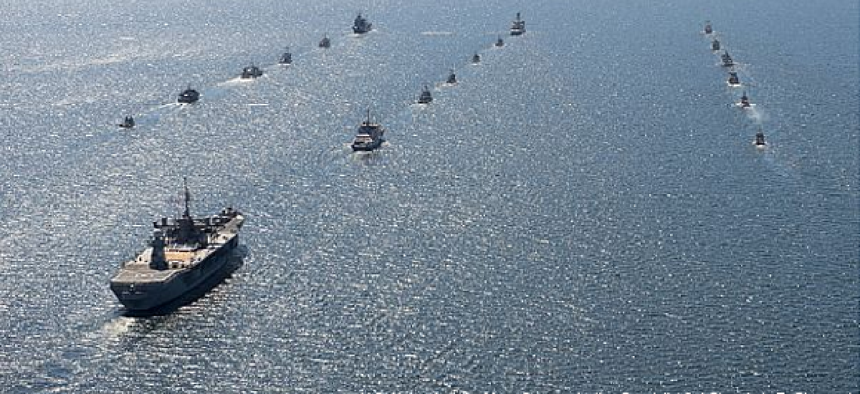Battlespace awareness through big data


Connecting state and local government leaders
The Navy and Esri are combining the massive amounts of data available from satellite and other remote-sensing platforms with the analytic tools of geospatial information systems.
A hundred years ago, the cutting edge in “battlespace awareness” was sending a soldier up in a balloon to get a bird’s eye view of enemy deployments.
Today, the Navy and Esri are teaming up to explore the current frontier in battlespace awareness – combining massive amounts of data available from satellite and other remote-sensing platforms with the analytic tools of geospatial information systems.
In September, the Naval Meteorology and Oceanography Command (NAVMETOCCOM) signed a three-year agreement with Esri to jointly develop applications based on Esri’s off-the-shelf software that will provide, according to NAVMETOCCOM commander Rear Adm. Tim Gallaudet, “unmatched battlespace awareness and environmental information to the warfighters that yields better decisions made faster than the adversary.”
Suppose a commander wants to protect a high-value target – a ship, facility or other piece of infrastructure – from an attack. Currently, at least at sea, that means assessing risk by consulting a number of different data sets, many of which are not digital, including nautical charts, atmospheric information, ocean conditions, elevation of nearby land features, etc.
“The commander is forced to brain-integrate any information gathered and approximate a best answer,” said Curt Hammill, Esri’s account manager for the project. “It is a cumbersome, sub-optimal and a costly process in terms of manpower and resources.”
Port all that data into a GIS system for analysis, however, and commanders can make better decisions more quickly. “Dynamic data can be automatically integrated into future predictions,” said Hammill. “Experts can inject local patterns and mission area expertise into the analysis. Operational thresholds can be spatially applied to reveal ‘Go – Maybe – NoGo’ areas for a specific mission. The commander can ask “what-if” questions and receive immediate, map-based insight.”
According to Hammill, the project is prototyping a concept called the Intelligent Decision Map (IDMap). “The IDMap will organize services-based data and structure the analytics,” he said. “It will make any analysis process easily reproducible and able to be automated. All these attributes will speed the commander to a better-informed decision.”
During the first year of the project, Hammill says the team has four main goals:
1. To establish prototype lab at Stennis Space Center, Miss., using the ArcGIS platform for geospatially enabling naval oceanography.
2. To create an IDMap proof-of-concept.
3. To design a sustainable training plan for personnel to deploy and use the GIS capabilities in their operations.
4. To test key Open Geospatial Consortium (OGC) application standards and profiles for ocean and atmospheric analysis and decision-making.
In parallel to this project, Hammill said, the Navy is standardizing processes to provision charts, imagery and maps from the National Geospatial-Intelligence Agency to warships. “These extremely large data sets are pre-staged, saving precious satellite bandwidth,” said Hammill.
With ships pre-provisioned with the basic data sets, transmission of updates and real-time data from remote sensors can be much faster and result in more timely decisions in the field.




